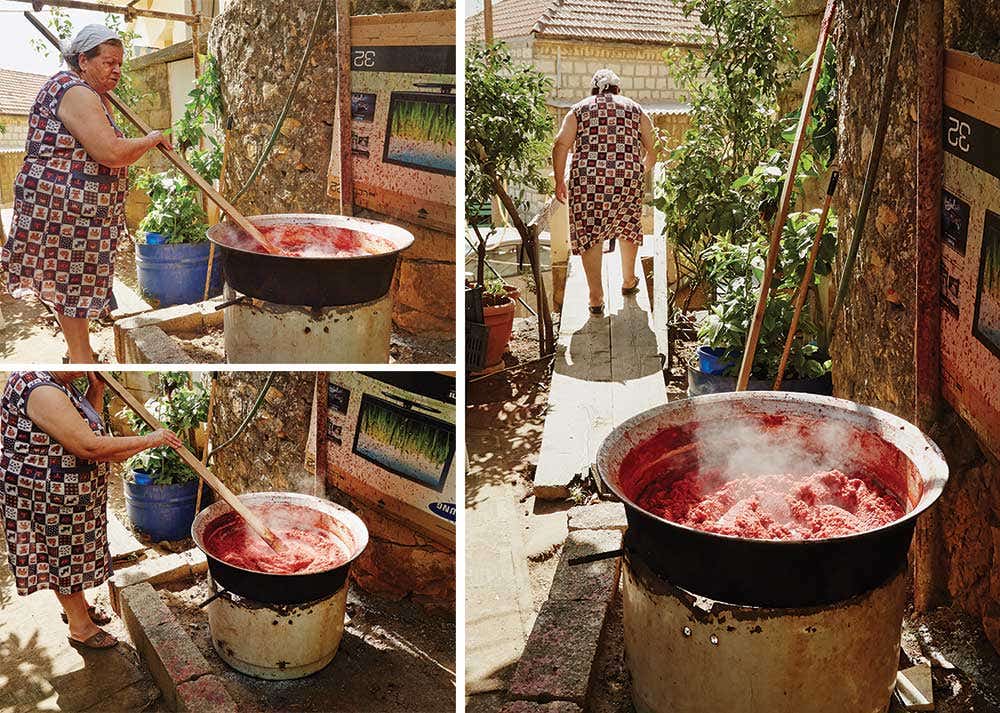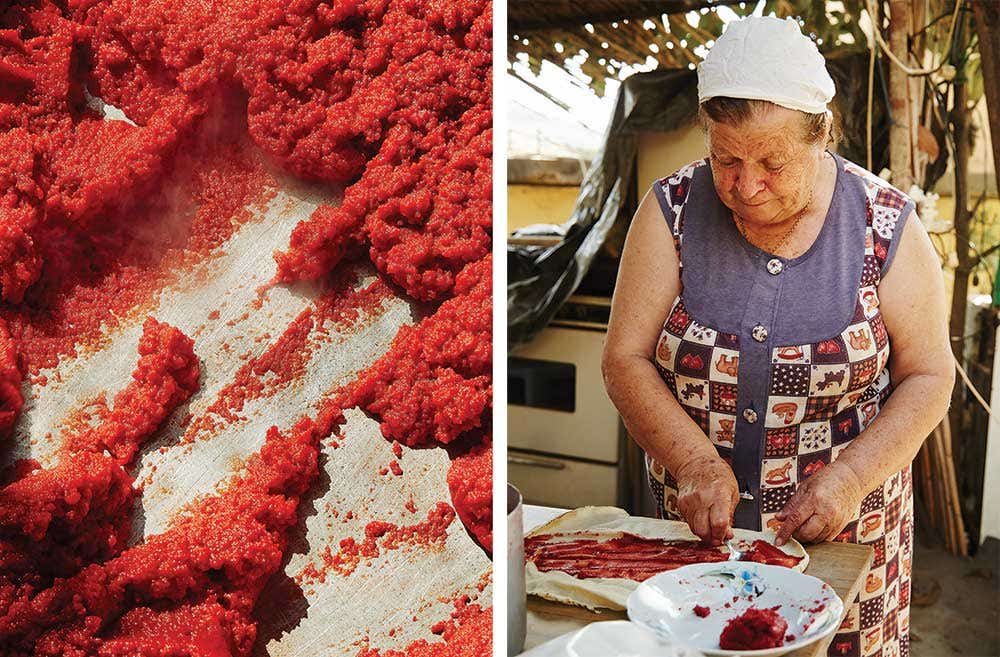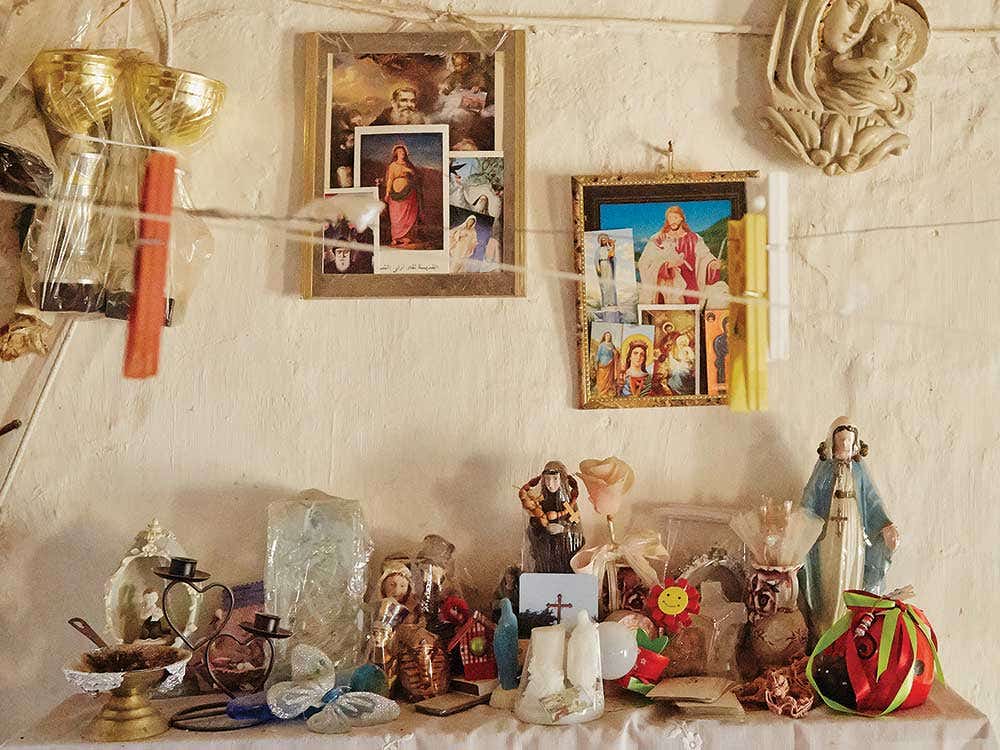
How to Prepare for Winter With Tomato Paste
Do like they do in Lebanon and stock up for shakshuka and roast lamb

It was still sunny and hot in Houmal during the waning days of summer, but the village had already given itself over to preparing for the colder months ahead. Families worked to bring in the year’s sumac harvest. The air was thick with the scent of woodsmoke and slowly stewing tomatoes. I had come to Lebanon with my friend Angela Mualem Fout, who lives in New York but grew up in the village. Twenty minutes on narrow, dusty roads into the mountains to the east of Beirut—it was a world apart from the hurried capital we had just left behind.
Rounding a hairpin corner, we encountered Saida Daou, a family friend, stoking a fire in her courtyard. Salty tomato paste is an elemental component of Lebanese cuisine, and in Houmal most residents make their year's supply at home from tomatoes they have grown themselves. Saida's disit—a large, wide pan haphazardly set on a metal stand—steamed exuberantly with the reddest red tomatoes I have ever seen, with days' worth of coals smoldering underneath.

Saida had started by picking the ripest end-of-season red plum tomatoes from her vines, blending them to a pulp, and removing the seeds and skins with a food mill. Now she let the juice cook over the fire for hours as it slowly thickened into a viscous paste. The goal was something with the consistency of labneh, she explained. We marveled as this woman of nearly 65 wielded a 5-foot plank of wood to stir the mixture.
Once it thickened, she added the only other ingredient: copious quantities of sea salt, which helps preserve the paste, allowing it to be stored for months unrefrigerated. As the coals cooled, Saida left her disit in the hot direct sun, where it would sit for days to cure the mixture and bind it together. Once the paste became thick and leathery, she would spoon it into jars to be sealed and stacked in her cupboard.

You would find a similar supply in most homes in Lebanon, where the ultra-concentrated tomato gives a hint of summer to vegetable stews and shakshuka, to beans and roasted lamb. That would come later. Today, Saida produced some fresh flat pita and fresh olive oil made from the fruit from the trees in her grove, farther up the mountain. It was still summer, and the warm tomatoes were too good not to try fresh.
Keep Reading
Continue to Next Story










